UPSC Daily Current Affairs: 12th May 2025 | Current Affairs & Hindu Analysis: Daily, Weekly & Monthly PDF Download
GS3/Science and Technology
Russian Spacecraft Crashes Back to Earth After 50 Years
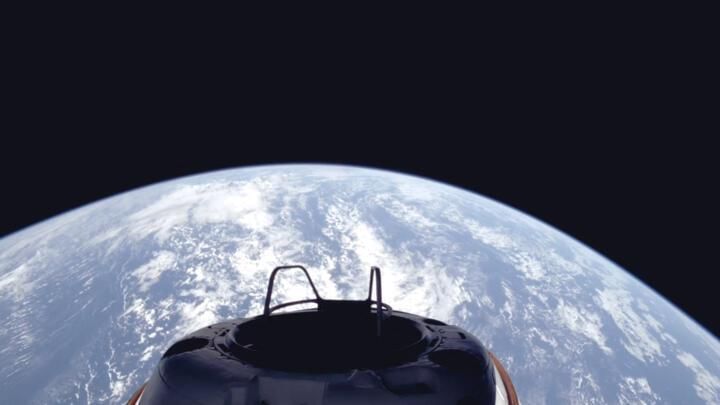 Why in News?
Why in News?
A 500 kg fragment of the Soviet Kosmos 482 spacecraft, which was launched on March 31, 1972, is expected to crash into the Indian Ocean, west of Jakarta. Originally designed to land on Venus, the mission failed, and while most parts re-entered Earth within a decade, this particular piece remained in orbit. Experts were unable to determine the exact time or location of its re-entry until the very end.
Key Takeaways
- Kosmos 482 was part of the Soviet Union's Cold War-era space exploration efforts.
- The spacecraft was intended to study the surface and atmosphere of Venus.
- It experienced a malfunction that prevented it from leaving Earth's orbit.
Additional Details
- Kosmos 482 Mission: Launched under the Venera Program (1961–1984), the Soviet Union sent 28 spacecraft to Venus. Of these, 13 entered the atmosphere and 10 successfully landed, but the extreme conditions limited their operational time to between 23 minutes and 2 hours.
- Mission Details: Kosmos 482 lifted off shortly after its twin, Venera 8, which landed on Venus 117 days later and carried instruments to measure various atmospheric conditions.
- Outcome: The mission failed due to a malfunction with the upper rocket stage, which shut off prematurely due to an incorrectly set timer, leaving the spacecraft stranded in orbit.
- Current Status: The lander module, made of titanium and gradually being pulled back to Earth by atmospheric drag, is expected to return without control mechanisms, relying solely on atmospheric friction to decelerate.
- Material and Speed Concerns: The module was traveling at over 17,000 miles per hour and had a melting point higher than typical re-entry temperatures, making it likely to survive the fall.
The re-entry of Kosmos 482 is not an isolated incident; in 2022, over 2,400 man-made objects re-entered Earth's atmosphere, with most burning up or landing in the ocean. Scientists remain unconcerned about the lander module's crash due to the low risk posed to humans, with the chance of injury from falling debris being less than 1 in 100 billion.
GS3/Science and Technology
Asteroid YR4: A Potential Threat to the Moon
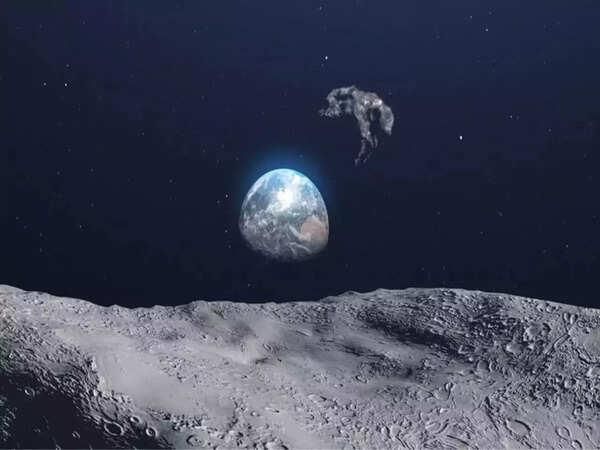 Why in News?
Why in News?
On April 2, 2025, NASA announced that asteroid 2024 YR4 has a 3.8% probability of colliding with the Moon on December 22, 2032. This announcement has sparked interest and concern regarding the asteroid's characteristics and its potential impact.
Key Takeaways
- Asteroid YR4 is a Near-Earth Asteroid (NEA) discovered in December 2024 using the ATLAS telescope in Chile.
- Its orbit brings it within 1.3 times the Earth-Sun distance, classifying it as a Near-Earth Object (NEO).
- Initially triggered the highest-ever NASA asteroid impact alert in February 2025.
- Infrared data from the James Webb Space Telescope estimates its size at approximately 65 meters, comparable to a 10-storey building.
- Earlier, it had a 1% chance of hitting Earth, but the latest analysis shows a negligible risk to our planet.
What are Asteroids?
- Asteroids: Also known as minor planets, they are rocky remnants from the early solar system, dating back 6 billion years.
- They exhibit irregular shapes, though some are nearly spherical, and some host small companion moons or exist as binary or triple systems.
Classification of Asteroids
- Main Asteroid Belt: Located between Mars and Jupiter, this region contains the majority of known asteroids.
- Trojans: These asteroids share an orbit with a planet and remain stable due to the Lagrange Points (L4 and L5), where gravitational forces from the Sun and the planet balance.
- Near-Earth Asteroids (NEAs): These have orbits that pass close to Earth’s orbit; those that cross Earth's orbital path are known as Earth-crossers.
The potential collision of asteroid YR4 with the Moon raises important questions about our understanding of near-Earth objects and the measures we can take to monitor and mitigate such risks. As new data comes in, it is crucial to stay informed about these celestial bodies and their trajectories.
GS2/Polity
Why India Must Get the Caste Census Right
 Why in News?
Why in News?
The Narendra Modi government’s decision to include caste enumeration in the upcoming Census marks a transformative moment in Indian policymaking. This move is not merely a concession to identity politics; it acknowledges the socio-economic realities of India and serves as a foundational step towards evidence-based policymaking aimed at creating a more equitable and inclusive society.
Key Takeaways
- Caste enumeration is essential for evidence-based policy and social justice.
- Historical contradictions exist in India's approach to caste, balancing abolition of discrimination with affirmative action.
- The lack of comprehensive caste data hampers the effectiveness of reservation policies.
- Past failures in caste data collection highlight the need for a credible framework.
Additional Details
- Historical Context: Post-Independence, India adopted a dual strategy of abolishing caste discrimination while implementing reservations. However, the exclusion of caste enumeration for non-SCs and STs led to a flawed governance model that ignored the realities of many.
- Legal Necessity: Caste enumeration is supported by legal frameworks such as the 73rd and 74th Constitutional Amendments, which require detailed caste data for effective implementation of reservations.
- Case Study - Bihar's 2022 Caste Survey: A successful model of caste enumeration that utilized a vetted list of castes and structured methods to achieve clarity and credibility.
- Proposed Framework: Recommendations for a credible caste census include amending the Census Act, employing standardized questionnaires, training enumerators, and conducting pilot tests.
In conclusion, India's consistent enumeration of SC and ST castes since 1951 demonstrates that extending this practice to OBC and upper-caste groups is both manageable and essential. The delayed 2021 Census presents a unique opportunity to address long-standing data gaps. Without accurate caste data, the promise of social justice remains unfulfilled, and effective policy cannot be established.
GS2/International Relations
Self-Defence Clause in Global Law
Why in News?
India and Pakistan have reached an agreement to halt all military actions and firing following India's precision strikes under Operation Sindoor. This action was taken in self-defence in response to the tragic Pahalgam massacre that resulted in the deaths of 26 civilians.
Key Takeaways
- The United Nations Charter generally prohibits the use of force, as outlined in Article 2(4).
- Article 51 allows for self-defence in the case of an armed attack against a Member State.
- The International Court of Justice (ICJ) in the case of Nicaragua v. U.S. (1986) defined an "armed attack" as the most severe form of force.
Additional Details
- Conditions of Self-Defence:The right to self-defence is contingent upon two main criteria:
- Necessity: The force used must be essential for responding to an armed attack.
- Proportionality: The response must not exceed what is necessary to repel the attack.
- States are required to promptly inform the UN Security Council (UNSC) of any self-defence actions taken.
- India's missile strikes on May 7, 2025, were described as a "measured response," implying a claim of self-defence, although this was not explicitly stated.
- At a briefing on May 8, 13 out of 15 UNSC members were informed, likely fulfilling the obligation to report actions taken in self-defence.
Unwilling or Unable Doctrine
- This emerging principle in international law, particularly relevant since 9/11, allows a state to use force in self-defence against non-state actors operating from another state's territory if that state is:
- Unwilling to address the threat.
- Unable to stop the threat.
- This doctrine was notably invoked by the U.S. in 2011 during the operation that resulted in the death of Osama bin Laden, and again in 2014 with airstrikes on ISIS in Syria.
- Criticism of this doctrine arises from countries like Russia, China, and Mexico, claiming it undermines state sovereignty and the UN system.
India’s Stance
- India's position remains evolving and somewhat unclear. During a UNSC Arria Formula meeting in February 2021, India outlined three conditions for invoking this doctrine:
- The state must have repeatedly attacked the sovereign state.
- The host state must be unwilling to neutralize the threat.
- The host state must actively support or sponsor the non-state actor.
- Legal experts note that it is uncertain whether these conditions are cumulative or independent.
- In response to the Pahalgam attack, India accused Pakistan of failing to act against terrorism and labeled it a safe haven for terrorists. This indicates an implicit reliance on the "unwilling or unable" doctrine, despite its lack of codification in customary international law.
In summary, the complexities of self-defence in international law highlight the delicate balance between state sovereignty and the need for security in the face of threats, as exemplified by the ongoing tensions between India and Pakistan.
Consider the following statements:
- 1. The Charter of the United Nations Organization was adopted at Geneva, Switzerland in June 1945;
- 2. India was admitted to the United Nations Organization in the year 1945;
- 3. The Trusteeship Council of the United Nations Organization was established to manage the affairs of territories detached from Japan and Italy after WWII.
Which of the statements given above is/are correct?
- Options: (a) 1, 2 and 3 (b) 2 only* (c) 1 and 3 (d) 3 only
GS2/Polity
Right to Know: Key Rights in the Wikimedia Case
Why in News?
On May 9, 2025, the Supreme Court of India annulled the Delhi High Court's order that mandated the Wikimedia Foundation to remove a page from its Wikipedia platform. This ruling is significant for several reasons.
Key Takeaways
- The Supreme Court prioritized the protection of free speech and public discourse.
- The ruling reinforced that the right to know is a fundamental right linked to Articles 19(1)(a) and 21 of the Constitution.
- Wikimedia was recognized as a neutral intermediary that does not control user-generated content.
- The High Court's interpretation of user comments as contempt was deemed an overreach.
Additional Details
- Protection of Free Speech: The Supreme Court highlighted that significant legal and public issues should remain open for discussion, even if they are currently sub judice. For example, users critiquing a judicial order on Wikipedia were exercising their right to free speech, and the High Court was criticized for overreacting by viewing this as contempt.
- Right to Know as a Fundamental Right: The Court reaffirmed that the right to know is encompassed within fundamental rights, particularly under Articles 19(1)(a) (freedom of speech) and 21 (right to life and personal liberty). Wikipedia entries serve the public interest by disseminating vital information, and removing pages restricts access to knowledge.
- Wikimedia's Role: The Foundation acts merely as a platform, providing technical infrastructure while allowing users to generate content. The High Court mistakenly targeted Wikimedia instead of adhering to proper intermediary liability standards outlined in the IT Act.
- Misinterpretation by the High Court: The High Court incorrectly labeled user discussions and criticisms on Wikipedia as contempt of court, overlooking their nature as public opinion. A forum questioning the logic of the High Court's interim order expressed a protected form of speech.
- Courts and Free Speech: Courts should uphold free speech when public debate involves significant legal or democratic issues. The Supreme Court indicated that discussions on the Wikipedia platform about a High Court order were legitimate and did not obstruct justice.
The Supreme Court's decision marks a crucial affirmation of the right to know and the importance of free speech in a democratic society. It emphasizes the need for clearer regulations regarding intermediary responsibilities and supports the notion that open debate is essential for public accountability.
GS1/Indian Society
India’s Total Fertility Rate Remains Steady at 2.0 in 2021: Key Demographic Trends
 Why in News?
Why in News?
According to the Sample Registration System (SRS) report for 2021, released by the Registrar General of India (RGI), the Total Fertility Rate (TFR) in the country has remained constant at 2.0, the same as in 2020. This indicates a trend towards population stabilization, which has significant implications for social, economic, and healthcare policies.
Key Takeaways
- The Total Fertility Rate (TFR) in India is stable at 2.0 as of 2021.
- Replacement level TFR to maintain stable population is 2.1.
- State-level variations exist, with Bihar at the highest TFR of 3.0 and Delhi at the lowest with 1.4.
Additional Details
- Total Fertility Rate (TFR): This measures the average number of children a woman is expected to have during her reproductive years. A TFR of 2.0 suggests progress towards population stabilization.
- Key State-Level Trends:
- Bihar reports the highest TFR at 3.0.
- Delhi and West Bengal have the lowest TFR at 1.4.
- Other states below replacement level include Tamil Nadu, Andhra Pradesh, Kerala, Maharashtra, and Punjab, each at 1.5.
- Gujarat and Haryana are at 2.0, while Assam is at exactly replacement level with 2.1.
- Demographic Shifts:
- The proportion of 0-14-year-olds has decreased from 41.2% in 1971 to 24.8% in 2021.
- The working-age population (15-59 years) has increased from 53.4% to 66.2%.
- The elderly population (60 years and above) rose from 6% in 1971 to 9% in 2021, with Kerala having the highest at 14.4%.
- Changing Marriage Patterns: The mean age of marriage for females has increased from 19.3 years in 1990 to 22.5 years in 2021, contributing to lower fertility rates.
- Policy Responses: The Finance Minister announced plans for a high-power committee to tackle challenges from demographic changes, although the Census remains delayed, limiting analysis.
The stabilization of TFR is a positive sign for controlling population growth but also presents challenges, such as increased demand for healthcare and social services due to a rising elderly population. It is crucial for India to leverage its demographic dividend by enhancing employment opportunities and strengthening social infrastructure.
GS2/Polity
Supreme Court Upholds the "Right to Know"
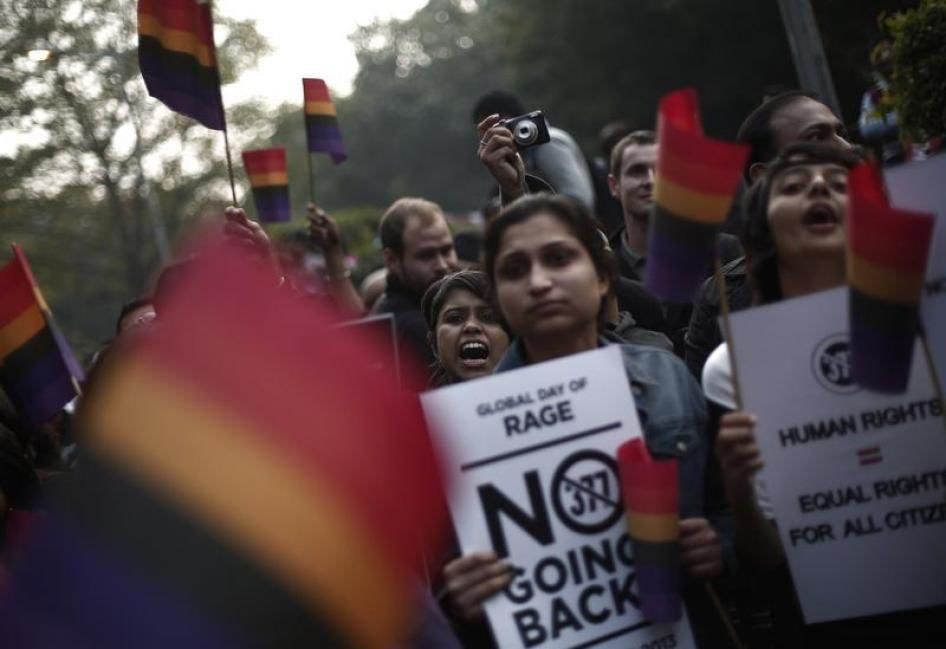 Why in News?
Why in News?
The Supreme Court of India recently overturned a Delhi High Court ruling that mandated the Wikimedia Foundation to eliminate a user-generated page and its related discussions. This decision is pivotal in affirming the importance of the "Right to Know" as a fundamental right.
Key Takeaways
- The "Right to Know" is recognized as a basic right under Article 19(1)(a) (Freedom of Speech and Expression) and Article 21 (Right to Life and Personal Liberty).
- This ruling highlights the necessity for citizens to engage in public discourse, access justice, and hold authorities accountable.
- Public discussions and critiques of judicial proceedings are essential democratic practices and should not automatically be deemed contemptuous.
Additional Details
- Article 19(1)(a) - Freedom of Speech and Expression: This article ensures that individuals have the right to express opinions through various mediums, including speech and writing. It encompasses the right to receive information about government actions, public decision-making, and court proceedings.
- Article 21 - Right to Life and Personal Liberty: This right includes the ability to participate in governance and live with dignity, facilitated by access to truthful public information, as reinforced in the Menka Gandhi case (1978).
- Rights expanded under Article 21 now include the right to live with dignity, livelihood, privacy, shelter, a clean environment, and crucially, the right to information.
This ruling serves as a reminder of the critical role that the "Right to Know" plays in fostering an informed citizenry and upholding democratic values.
GS2/Governance
Kerala, Maharashtra, and Tamil Nadu Achieve SDGs in MMR, U5MR, NMR
Why in News?
According to the Sample Registration System (SRS) Report 2021, the states of Kerala, Maharashtra, and Tamil Nadu have successfully achieved the United Nations Sustainable Development Goals (SDGs) concerning Maternal Mortality Rate (MMR), Under-Five Mortality Rate (U5MR), and Neonatal Mortality Rate (NMR).
Key Takeaways
- SDG 3 focuses on ensuring healthy lives and promoting well-being for all.
- Target 3.1 aims to reduce MMR to below 70 per 100,000 live births by 2030.
- Target 3.2 seeks to reduce U5MR to 25 or fewer per 1,000 live births and NMR to 12 or fewer per 1,000 live births.
Additional Details
- States meeting MMR target (≤70):
- Kerala (20)
- Maharashtra (38)
- Tamil Nadu (49)
- States/UTs meeting U5MR target (≤25):
- Kerala (8)
- Tamil Nadu (14)
- Delhi, J&K, West Bengal, Punjab, Himachal Pradesh
- States/UTs meeting NMR target (≤12):
- Kerala (4)
- Tamil Nadu (9)
- National improvements include a drop in MMR from 130 (2014-16) to 93 (2019-21).
- The Infant Mortality Rate (IMR) declined from 45 (2014) to 31 (2021).
- Significant improvements in the Sex Ratio at Birth from 899 to 913 (2014-2021).
- Total Fertility Rate reached the replacement level of 2.0.
- Compared globally (1990-2023), India achieved an 86% reduction in MMR, 78% in U5MR, 70% in NMR, and 58% in IMR.
In relation to Janani Suraksha Yojna, consider the following statements:
- 1. It is a safe motherhood intervention of the State Health Departments.
- 2. Its objective is to reduce maternal and neonatal mortality among poor pregnant women.
- 3. It aims to promote institutional delivery among poor pregnant women.
- 4. Its objective includes providing public health facilities to sick infants up to one year of age.
How many of the statements given above are correct?
- Options: (a) Only one (b) Only two* (c) Only three (d) All four
These findings underscore the significant progress made by Kerala, Maharashtra, and Tamil Nadu in achieving critical health targets.
GS3/Economy
Why Digital Banking Units Never Picked up in India
 Why in News?
Why in News?
In October 2022, to celebrate India's 75th year of Independence, 75 Digital Banking Units (DBUs) were inaugurated across remote districts to enhance banking access to underserved populations. However, despite the initial excitement surrounding their launch, progress in expanding DBUs nationwide has been minimal.
Key Takeaways
- DBUs are specialized hubs providing digital banking services.
- Commercial banks can establish DBUs without prior RBI approval.
- Despite initial launches, expansion has been limited due to various challenges.
Additional Details
- Digital Banking Units (DBUs): Defined by the Reserve Bank of India (RBI), DBUs are fixed-location hubs equipped with the necessary digital infrastructure to deliver a range of banking services in both self-service and assisted modes.
- Services Offered: DBUs must provide essential digital banking products, including savings and current accounts, fixed and recurring deposits, digital kits for banking, and various loan services.
- Challenges in Implementation: Banks faced tight deadlines for setup and were directed to specific locations, leading to operational difficulties and limited business growth in less populated areas.
- Operational Costs: High initial setup and operational costs pose significant barriers to the expansion of DBUs, limiting their reach and effectiveness.
In conclusion, while the initiative to establish DBUs aimed to improve digital banking access in India, various logistical, economic, and operational challenges have hindered their widespread adoption and growth in the country.
GS1/Geography
Key Facts about Chenab River
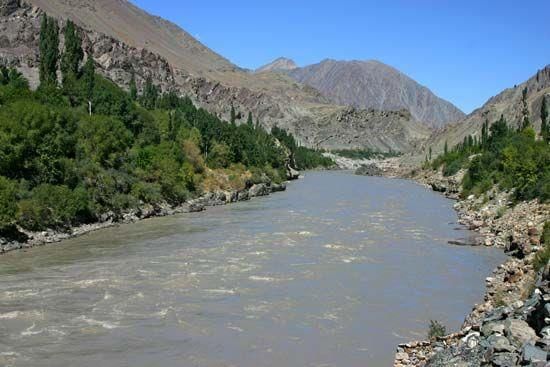 Why in News?
Why in News?
India recently opened multiple gates at the Baglihar Hydroelectric Power Project Dam, which is situated on the Chenab River in Ramban. This action is significant in the context of managing rising water levels in the river.
Key Takeaways
- The Chenab River is a major tributary of the Indus River.
- It originates from the confluence of the Chandra and Bhaga streams in Himachal Pradesh.
- The river flows through Jammu and Kashmir, and then into Pakistan.
- Its total length is approximately 605 miles (974 km).
- It supports several irrigation canals and is the largest river in Himachal Pradesh by water volume.
Additional Details
- Origin: The Chenab River is formed by the joining of two streams, Chandra and Bhaga, at Tandi in the upper Himalayas.
- In its upper reaches, it is also referred to as the Chenab River, flowing westward through the union territory of Jammu and Kashmir.
- The river descends between the steep cliffs of the Siwalik Range to the south and the Lesser Himalayas to the north, eventually turning southwest into Pakistan.
- After merging with the Jhelum River near Trimmu, it empties into the Sutlej River, which is also a tributary of the Indus River.
- Notably, the waters of the Chenab are shared by India and Pakistan per the terms of the Indus Water Treaty.
- Tributaries: Significant tributaries include Miyar Nalla, Sohal, Thirot, Bhut Nalla, Marusudar, and Lidrari.
In summary, the Chenab River plays a crucial role in the geography and hydrology of northern India and Pakistan, serving both ecological and economic functions through its extensive river system.
GS3/Environment
Key Facts about Great Nicobar Island
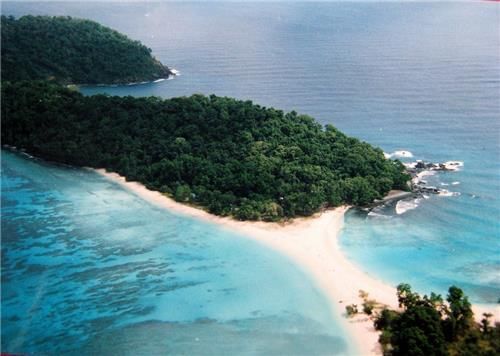 Why in News?
Why in News?
The Andaman and Nicobar Administration has recently called for financial bids to conduct a social impact assessment related to land acquisition necessary for the construction of a new arterial road under the proposed Great Nicobar Holistic Development Project.
Key Takeaways
- Great Nicobar Island is the southernmost island of the Nicobar Islands, situated in the Ten Degree Channel, which separates it from the Andaman Islands.
- The island spans an area of 1,044 sq. km and is characterized by a sparse population and dense tropical rainforests covering over 85% of its land.
- It boasts more than 100 kilometers of pristine beaches, famous for their beautiful coral reefs and clear waters.
- Indira Point, located on the island, is recognized as India's southernmost point, positioned less than 150 km from Indonesia.
- The highest point on the island is Mount Thullier, which rises to approximately 2,105 ft.
Additional Details
- Major Rivers: The island is traversed by significant rivers such as Galathea, Alexandra, and Dagmar.
- Indigenous Tribes: The prominent tribes on Great Nicobar Island include the Shompens and the Nicobarese.
- Biosphere Reserve: The island is home to the Great Nicobar Biosphere Reserve, which is designated as a UNESCO site, highlighting its ecological importance.
- Biodiversity: The island hosts around 650 species of plant life, including angiosperms, ferns, gymnosperms, bryophytes, and lichens. Notable rare species include the Cyathea albosetacea (tree fern) and Phalaenopsis speciosa (orchid).
- In terms of fauna, the region is known for its endemic and endangered species, with 11 species of mammals, 32 species of birds, 7 species of reptiles, and 4 species of amphibians identified as unique to the area. Noteworthy species include the Crab-eating Macaque, Nicobar Tree Shrew, Dugong, Nicobar Megapode, Serpent Eagle, saltwater crocodile, marine turtles, and Reticulated Python.
This information highlights the ecological significance and unique characteristics of Great Nicobar Island, emphasizing its biodiversity and cultural heritage.
|
55 videos|5389 docs|1141 tests
|
FAQs on UPSC Daily Current Affairs: 12th May 2025 - Current Affairs & Hindu Analysis: Daily, Weekly & Monthly
| 1. What happened to the Russian spacecraft that crashed back to Earth after 50 years? |  |
| 2. What is Asteroid YR4 and why is it considered a potential threat to the Moon? |  |
| 3. Why is it important for India to get the caste census right? |  |
| 4. What does the self-defence clause in global law entail? |  |
| 5. What are the key rights established in the Wikimedia case regarding the "Right to Know"? |  |
















